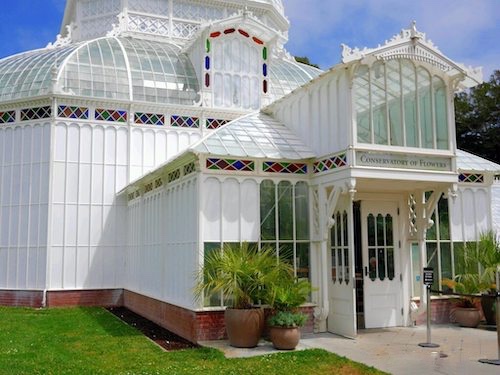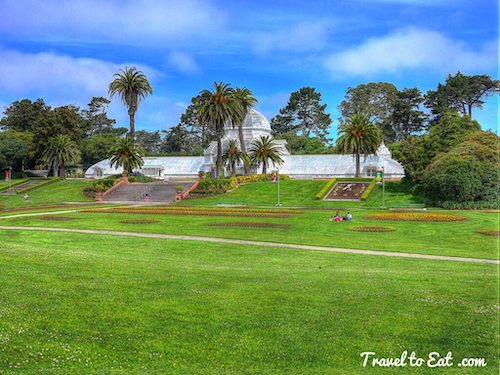
The Conservatory of Flowers is a greenhouse and botanical garden that houses a collection of rare and exotic plants in Golden Gate Park, San Francisco, California. With construction completed in 1878, it remains the oldest building in the park, and the oldest municipal wooden conservatory remaining in the United States. It is also one of the first municipal conservatories constructed in the country. The Conservatory was bought as a kit by James Lick, an eccentric businessman, piano maker, and successful real estate investor. It was intended for the City of San Jose where Lick had built a mansion surrounded by exotic plants imported from South America and around the world. Lick died in 1876 before constructing the conservatory on his estate, and it was put up for sale by his trustees. The kit was then purchased by a group of prominent San Franciscans, including Leland Stanford and Charles Crocker, who offered it as a gift to the City of San Francisco for use in Golden Gate Park. The Parks Commission accepted the gift and hired Lord & Burnham, a greenhouse manufacturing company from New York, to supervise the erection of the structure. Once open, it contained a large variety of rare and tropical plants, including a giant water lily, Victoria Regia, which at the time was the only known specimen in the United States.
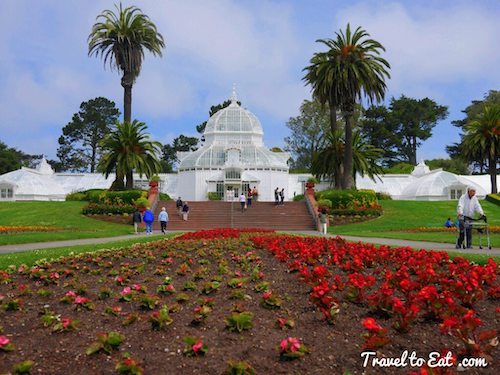
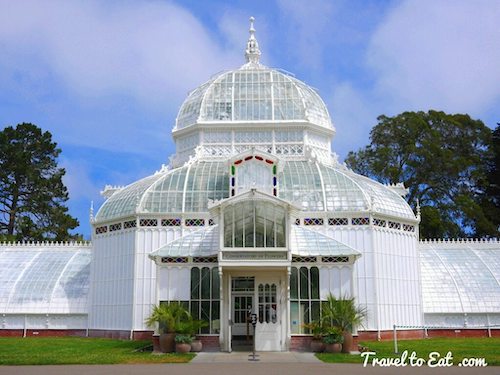
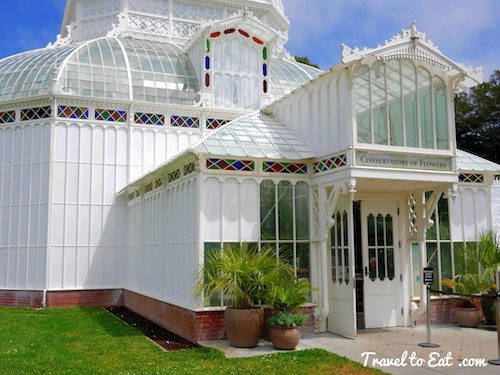
The 19th century glasshouse grew out of the city-dweller’s desire to bring nature and the natural into urban life. These structures became popular in urban, public, and semi-public settings. As these structures gained popularity in Europe, greenhouses began to be constructed on larger scales and of stronger materials. One engineer, Joseph Paxton (1803–1865), had an enormous effect on the development of the conservatory building type. His structures called for a system of glass and metal roof construction, whereas past structures had typically been constructed of wood and glass. His choice of materials allowed designs for glasshouses which were of substantially larger scales. His most well known example is The Crystal Palace at the world’s first International Exhibition in 1851. The Conservatory of Flowers consists of a wood structural skeleton with glass walls set on a raised masonry foundation. Conservatories were popular throughout California’s early history. Structures of various shapes and sizes were built in Victorian California, ranging from an attached and glassed-in wing for a residence, to a great domed or compartmentalized, detached glasshouse. Why did James Lick have his conservatory constructed of wood rather than iron, as was common in the later part of the 19th-century? The fact that wood was plentiful in the west is a strong reason that the Conservatory of Flowers was constructed of this material. Cast iron greenhouses do not appear to have been widely manufactured in America until the 1880s. In any case, the building is an iconic landmark in Golden Gate Park and a beautiful, if difficult to maintain, 19th century building. Today the conservatory contains approximately 1,700 plant species. Its collection of high-altitude orchids – more than 700 of the 1,000 known species – is described as the largest and most comprehensive public collection in the world. I have a separate post on the orchids, this post will focus on flowering plants, organized by genus.
Adenium
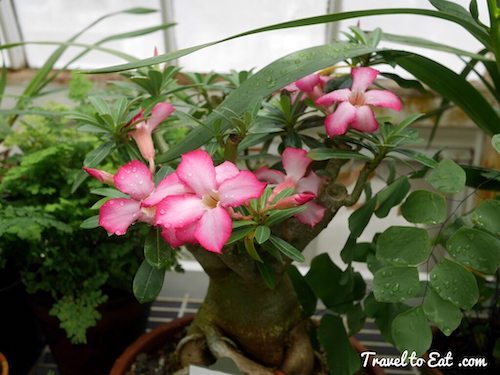
Adenium obesum is a species of flowering plant in the dogbane family, Apocynaceae, that is native to the Sahel regions, south of the Sahara (from Mauritania and Senegal to Sudan), and tropical and subtropical eastern and southern Africa and Arabia. Common names include Sabi star, kudu, mock azalea, impala lily and desert rose. This odd but beautiful plant comes from an equally odd but beautiful landscape, the island of Socotra in Yemen. One third of the plants on the island are endemic.
Alternanthera ficoidea Party Time
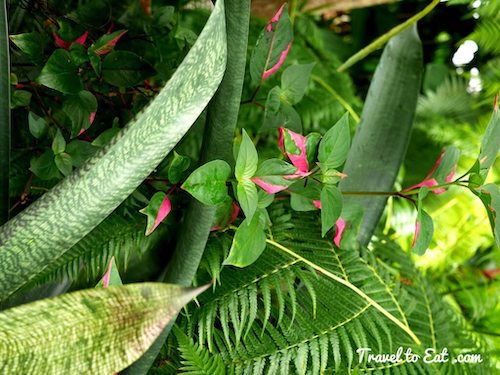
Alternanthera ficoidea or Joseph’s Coat is a low-growing tropical perennial valued for its bushy habit and glossy, colorful leaves. It is native from Mexico to Argentina where it naturally inhabits open forests with ample precipitation. The variable leaves may be blotched with marks of red, pink, yellow, orange, brown, copper or purple and sometimes have contrasting red venation. When conditions are favorable, mature specimens produce lots of small, white flowers that are ornamentally insignificant.
Anthurium
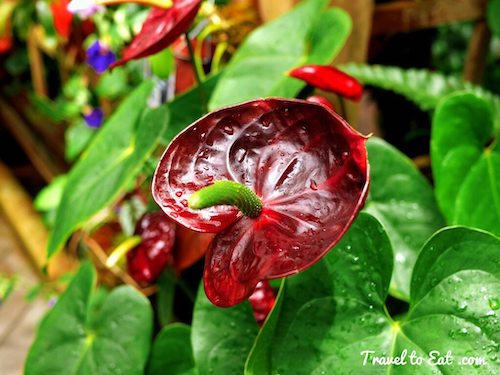
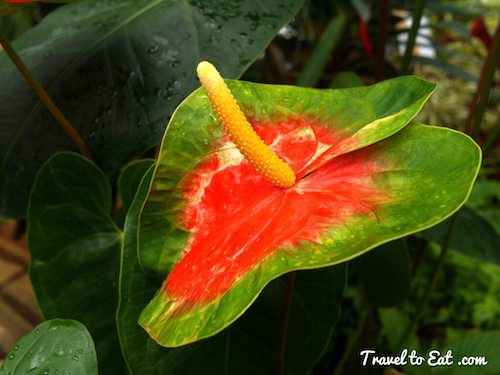
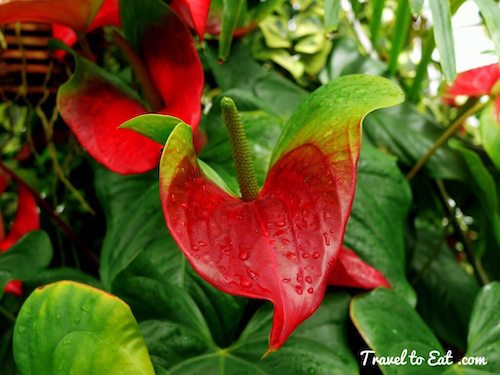
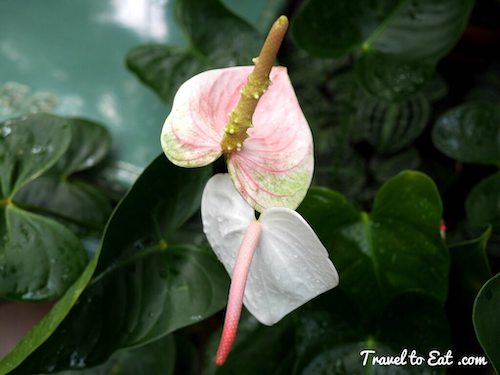
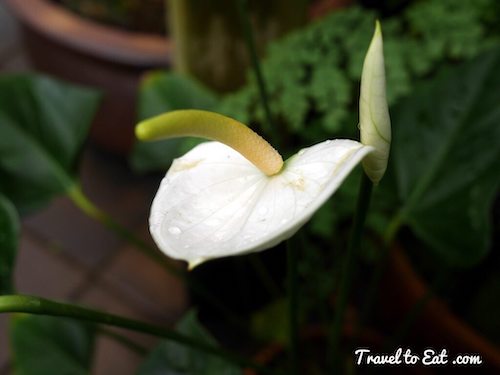
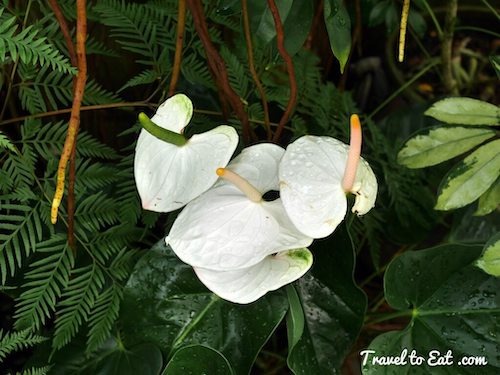
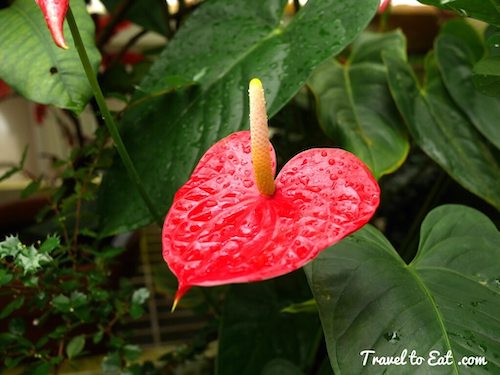
Anthuriums are herbaceous epiphytes native to tropical America. Anthurium is a genus of more than 800 species found in the New World tropics from Mexico to northern Argentina and Uruguay. The Anthurium is also known as Painted Tongue, Flamingo Flower (Flamingo Lily) or Tail Flower. Anthuriums are grown for their brightly colored flower spathes and their ornamental leaves.Anthurium is a genus of herbs often growing as epiphytes on other plants. Some are terrestrial. The red, heart-shaped flower of Anthuriums is really a spathe or a waxy, modified leaf flaring out from the base of a fleshy spike (spadix) where the tiny real flowers grow. The anthurium flowers appear as a roughness on the spadix as compared to a smooth spadix. Most common colors of anthuriums are red and shades of red. Being popular foliage plants, Anthuriums are grown for their attractive flowering bracts which are popular with the cut flower trade. Anthuriums are native to Panama, Columbia, Brazil, Ecuador. Deliberately or accidentally, however, some species have been introduced into Asian rainforests.
Aphelandra
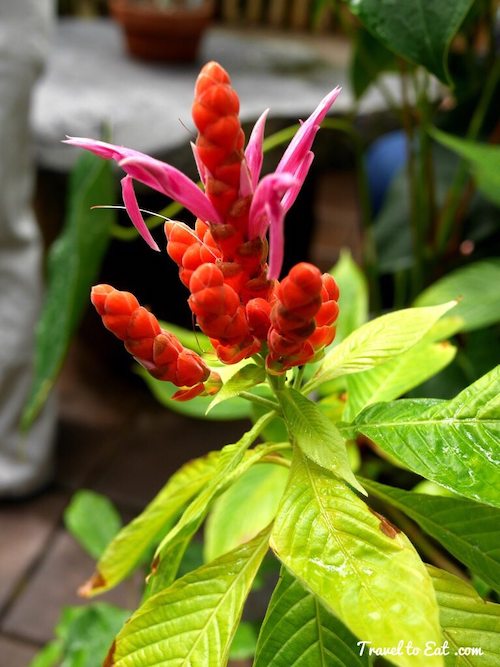
The genus Aphelandra has about 200 species of shrubs or herbs native to tropical America. The name is from Greek apheles, solitary, and aner, a male, referring to the single-celled anthers. Aphelandra sinclairiana is a plant species commonly called “Coral Aphelandra,” “orange shrimp plant” or “Panama Queen.” It is a shrub up to 3 m (10 feet) high, native to Central America. It has been reported from Panama, Costa Rica, Honduras and Nicaragua. It is also cultivated in warm locations elsewhere, with pink, red, orange, or red-violet flowers and bracts.
Hibiscus
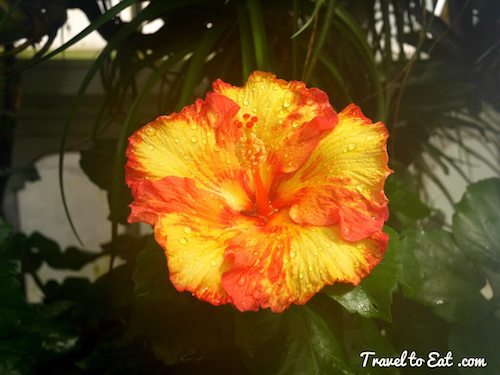
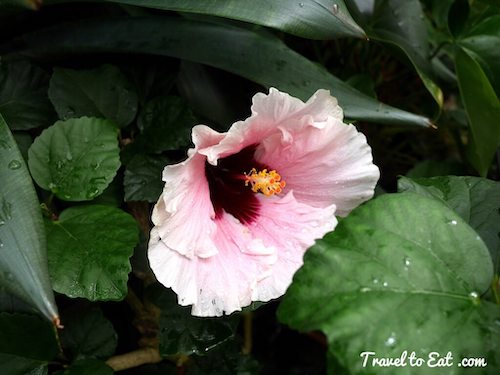
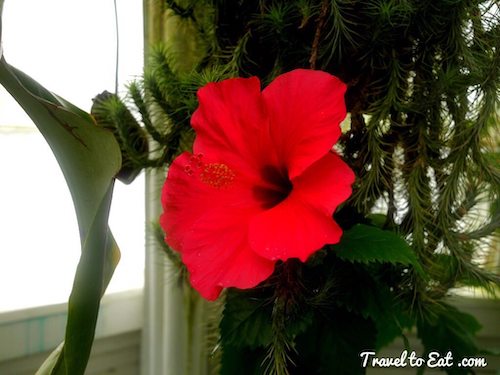
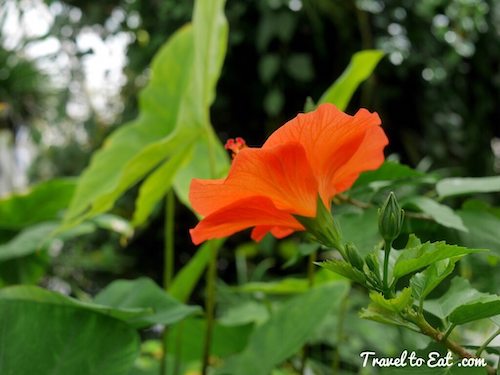
The Hibiscus captures the magic of the tropics by combining the lush, deep greens of the foliage and the bright colors of the flowers. The plant serves many purposes in different cultures. The red Hibiscus flower is traditionally worn by Tahitian women. A single flower, tucked behind the ear, is used to indicate the wearer's availability for marriage. Dried hibiscus is edible, and is a delicacy in Mexico. The tea made from hibiscus flowers is known by many names in many countries around the world and is served both hot and cold. The beverage is well known for its color, tanginess, and flavor. Certain species are also beginning to be used more widely as a natural source of food coloring, replacing synthetic dyes.
Bromeliads
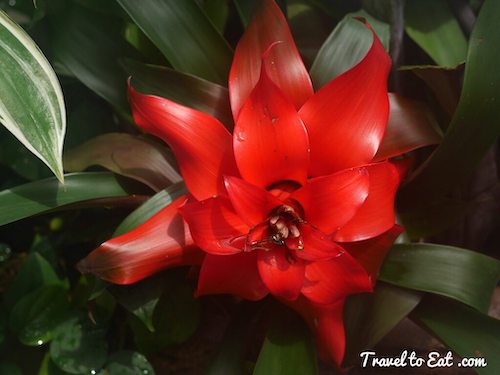
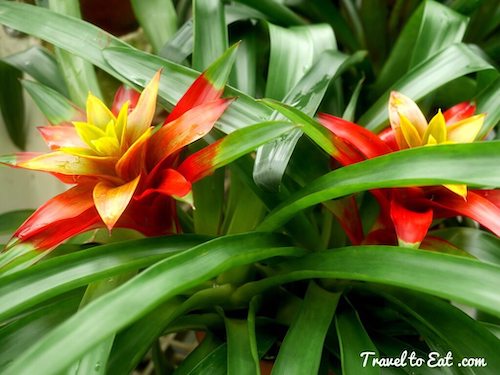
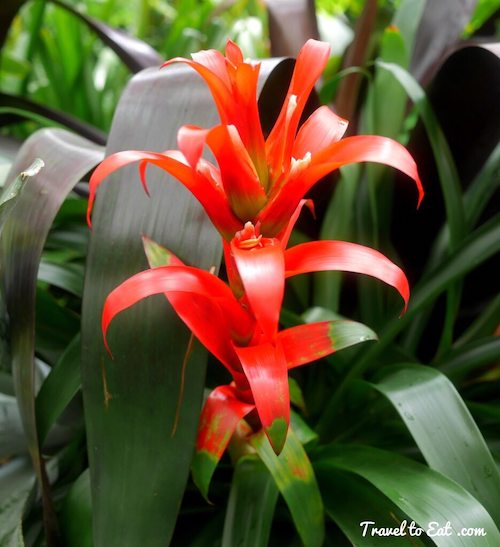
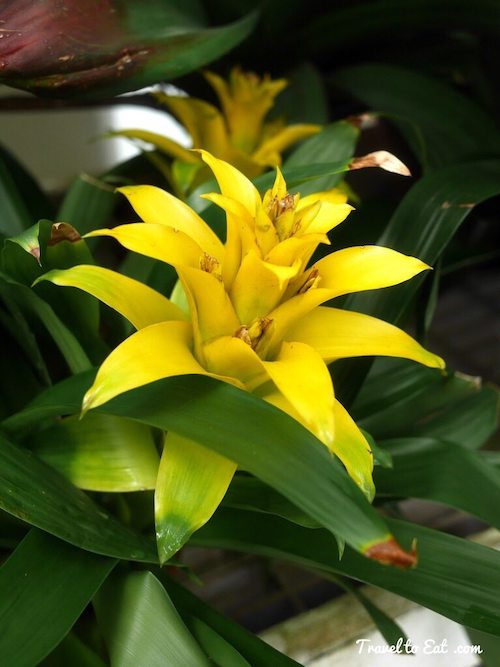
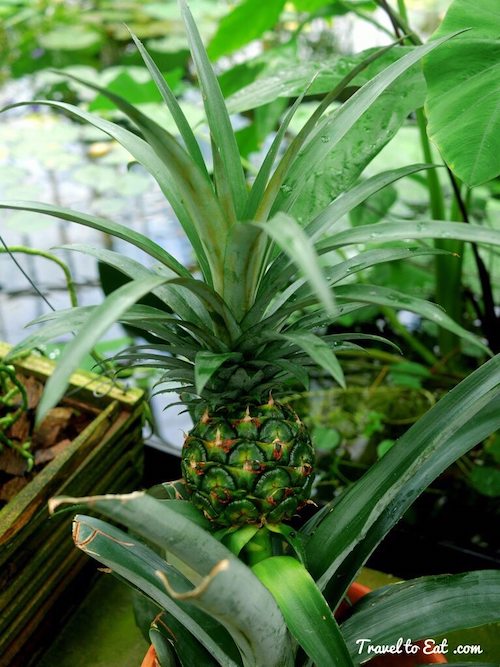
The pineapple plant is in the Bromeliad family. The fruit is actually made up of hundreds of berries that have fused together. On his second voyage to the Caribbean in 1493, Christopher Columbus and his crew were the first Europeans to taste the sweet fruit. Because it resembled a pinecone, Columbus dubbed it “The Pine of the Indies.” It was then introduced to Spain when Columbus brought it back, as a gift, for Queen Isabella.
Caesalpiniodae
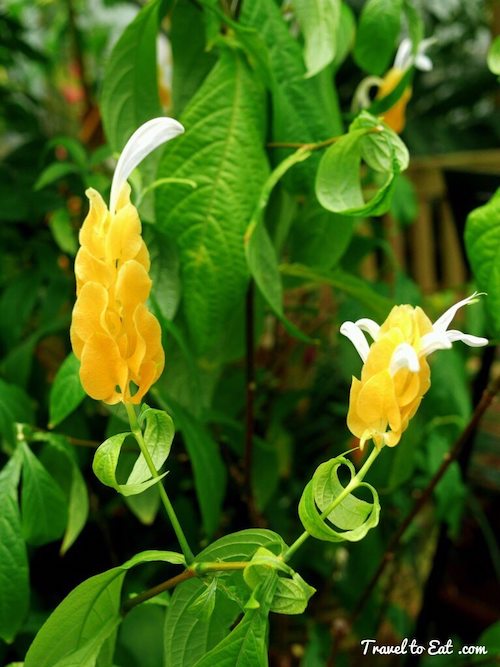
The Fabaceae or Leguminosae commonly known as the legume, pea, or bean family, is a large and economically important family of flowering plants. It includes trees, shrubs and herbaceous plants perennials or annuals, which are easily recognized by their fruit (legume) and their compound, stipulated leaves. The group is widely distributed and is the third-largest land plant family in terms of number of species, behind only the Orchidaceae and Asteraceae, with 630 genera and over 18,860 species. Caesalpinia is a genus of flowering plants in the legume family, Fabaceae. Membership within the genus is controversial, with different publications including anywhere from 70 to 165 species, depending largely on the inclusion or exclusion of species alternately listed under genera such as Hoffmannseggia. It contains tropical or subtropical woody plants. Cassia is a genus of flowering plants in the legume family, Fabaceae, and the subfamily Caesalpinioideae. Species are known commonly as cassias. Cassia is also the English common name of some species in the genus Cinnamomum of the family Lauraceae. Many species of genus Senna were previously included in Cassia.
Costus
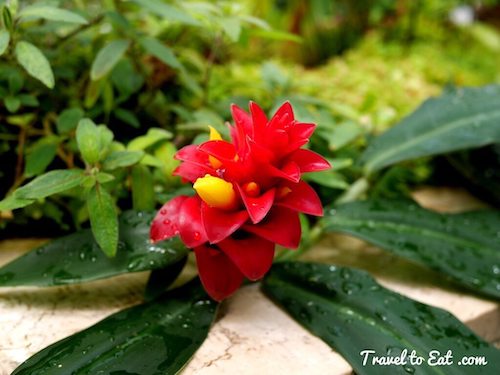
Costus barbatus, also known as Spiral Ginger, is a perennial plant with a red inflorescence. It is one of the most commonly cultivated Costus species. The foliage of Costus barbatus is dark green and fuzzy underneath. The long red inflorescences are complimented with bright yellow tubular flowers. Clumps spread easily and produce plants that normally get to six feet tall. Costus barbatus is native to Costa Rica. Plants are pollinated by hummingbirds. Costus barbatus are popular as cut flowers.
Codiaeum variegatum or Croton Mammy
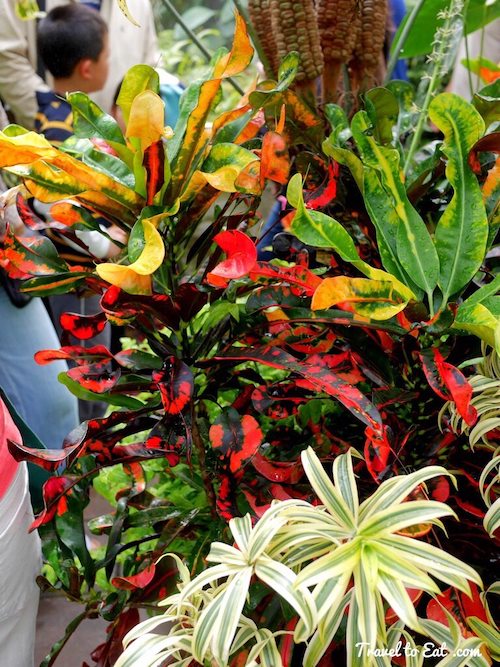
Codiaeum variegatum is an evergreen shrub native to Malaysia and islands of the western Pacific. Mammy is a brilliantly colored, small variety. The star-shaped flowers are produced on long stalks but are insignificant. The brightly-hued foliage is the attraction. Mammy’s leaves are linear with bluntly, rounded tips, arranged spirally around the stems with a slight corkscrew twist around the midrib. The new leaves emerge light green with streaks and splotches of yellow and mature to green, red, orange and yellow overlaid with bright red. Mature crotons are “V” shaped.
Cordylines
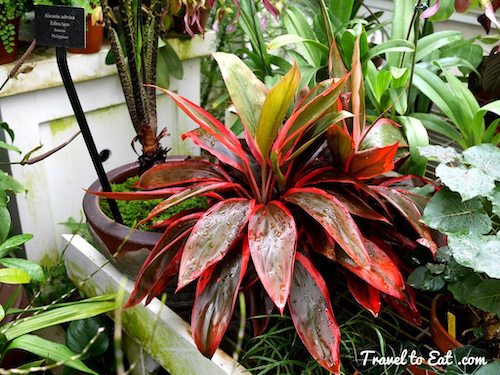
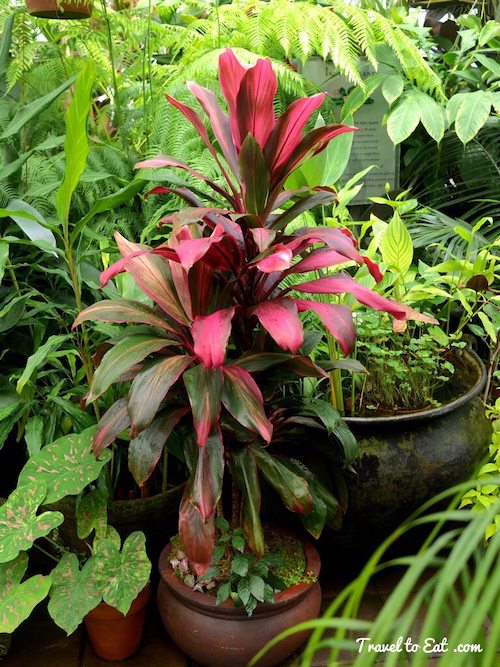
Many Cordylines come from Hawaii but there are also species native to South America, New Zealand, parts of Asia, New Guinea, the islands of the Pacific, Mauritius and eight species native to Australia. Cordylines come in many colours or combination of colours including many shades of greens, reds, pinks, purples, yellows, oranges, cream and white. Cordylines have a large range of leaf shapes and sizes with some varieties, with foliage up to a meter long with proportionate width. Some have compact leaves of only a few centimeters in length while others have narrow strap like foliage. While Cordylines grow in the tropics and are certainly beautiful, they are definitely not tender. They’re as tough as the proverbial ” old leather boot laces”, growing happily in the tropics and sub-tropics down to New South Wales, provided they are protected from direct frosts.
Cycad
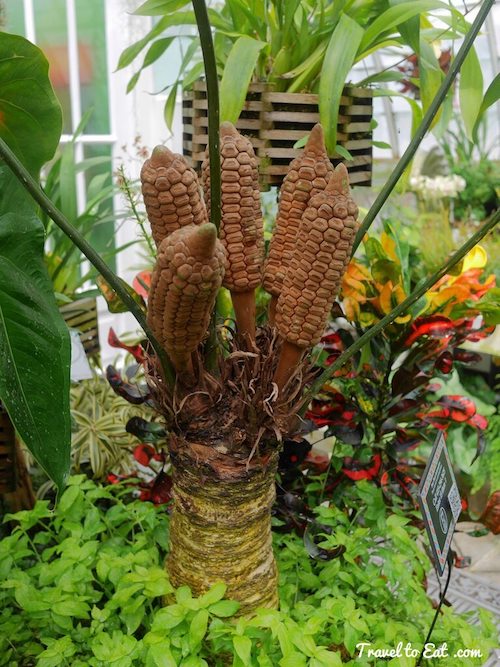
Cycads are a unique, ancient family unrelated to any other group of living plants. Cycads flourished in the Mesozoic Era some 250 million years ago. Zamia roezlii is one of the most primitive cycads, and also one of the largest and most majestic. At a distance, this cycad is easily mistaken for a palm, which it resembles in both size and habitat. Z. roezlii grows in swamps along the Columbian coastline. Locals use the seeds contained in the cones as food and consider it a delicacy.
Dichorisandra
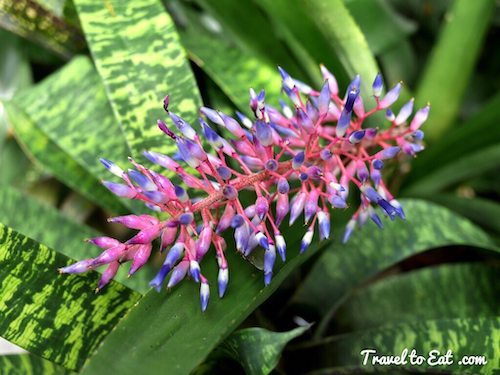
Dichorisandra thyrsiflora or Blue Ginger is a tropical plant which resembles ginger in growth and habit, but is actually related to the spiderworts (the genus Tradescantia). The plant is native to the tropical woodlands of North, Central and South America, specially in Atlantic Forest vegetation in Brazil. Of the family Commelinaceae, they are cultivated for their handsome spotted stems, large shiny foliage which is held horizontally, surmounted by striking blue flowers. It was first described by the naturalist Johann Christian Mikan in 1823.
Medinilla
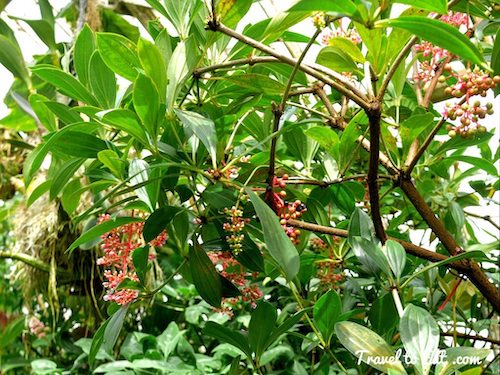
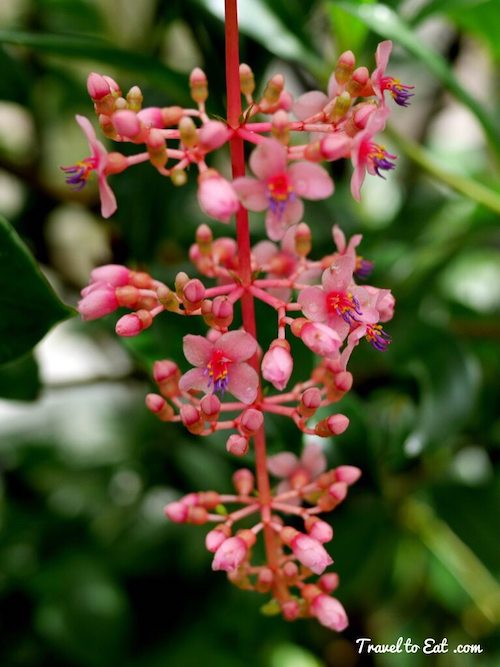
Medinilla is a genus of about 193 species of flowering plants in the family Melastomataceae, native to tropical regions of the Old World from Africa (two species) east through Madagascar (about 70 species) and southern Asia to the western Pacific Ocean islands. The genus was named after J. de Medinilla, governor of the Mariana Islands in 1820. They are evergreen shrubs or lianas. The leaves are opposite or whorled, or alternate in some species. The flowers are white or pink, produced in large panicles.
Pavonia strictiflora
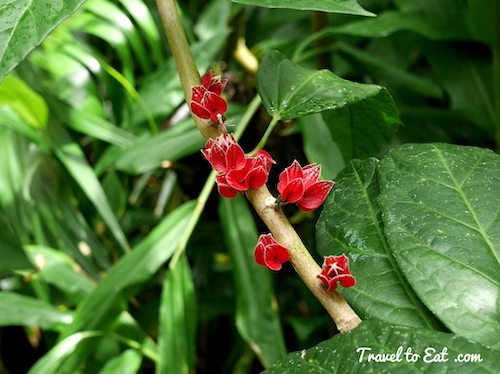
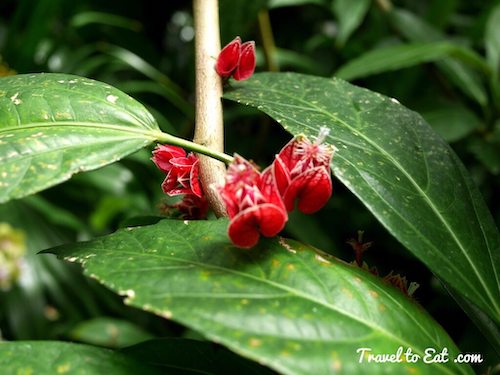
Plants in the genus Pavonia belong to the mallow family Malvacaeae. The flowers for this beauty bloom right from the branches. This adaptation is called Cauliflory. Cauliflory is a botanical term referring to plants that flower and fruit from their main stems or trunks rather than from new growth and shoots. This can allow trees to be pollinated or have their seeds dispersed by animals which cannot climb or fly. Goethea is a genus of plants of the family Malvaceae, commonly placed instead in the genus Pavonia. When recognised, about five species are placed in the genus, including G. strictiflora and G. cauliflora.
Rhododendron
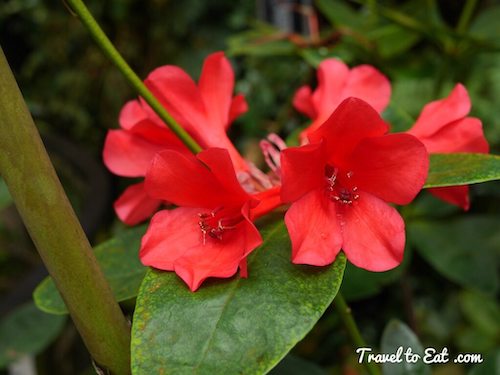
Rhododendron (from Ancient Greek “rose” and déndron “tree”) is a genus of over 1,000 species of woody plants in the heath family, either evergreen or deciduous. Most species have showy flowers. Azaleas make up two subgenera of Rhododendron. They are distinguished from “true” rhododendrons by having only five anthers per flower.
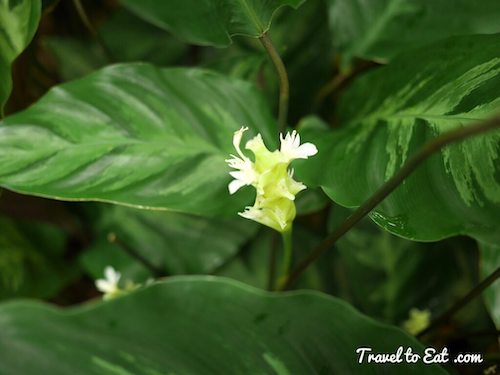
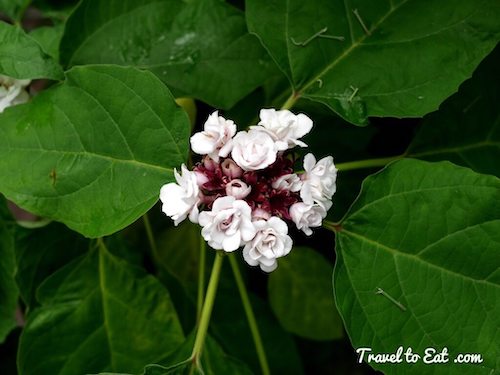
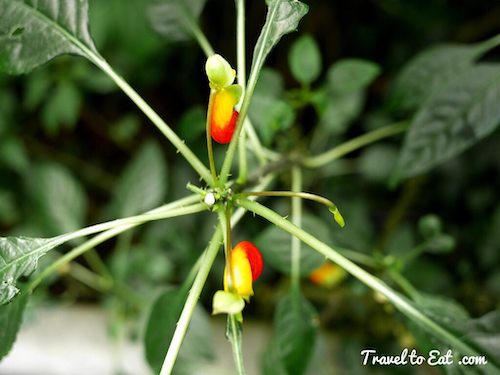
As always I have done my best to catagorize the flowers, with the exception of the last few. If you know what these few are or feel that something is in the wrong family, please leave a comment.
[mappress mapid=”23″]
References:
Bromeliad Encyclopedia: http://fcbs.org/
Cordyline Society: http://www.cordyline.org/index.php?option=com_frontpage&Itemid=1
Conservatory of Flowers Orchids: /conservatory-of-flowers-orchids-san-francisco-california/
Top Tropicals: http://www.toptropicals.com/cgi-bin/store/store.cgi?group=shrub

